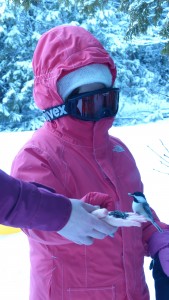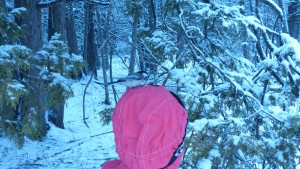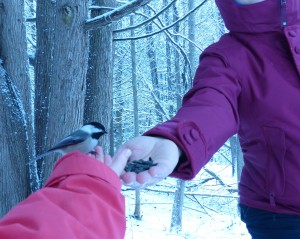It’s been Spring for nearly 2 months and I can say that most of the snowsuits in our school have been taken home. Most of them.
It’s also safe to say that our weather readiness has been scaled back from red alert to a beautiful shade of green as the sunshine and warmth arrives. Once again, we have survived Winter’s worst – albeit still recovering.
With the exception of below seasonal average cold days and relentless rain the above statement is true. Well, partially true because it is still very grey out below the constand clouds overhead. Literary scholars might label this as pathetic fallacy. Regardless of location, the weather plays a significant part in everyone’s lives and learning, especially in school.
As of May 22, 2019 we are still dealing with pavement only recesses due to our grass fields still in a wet and muddy state from recent(incessant) Spring Showers. To add to the fun, indoor recesses. When you add it all up, it has meant students are missing out on some crucial time outside. A teacher shared that he knew there had been too many indoor recesses when a student called him dad.
Has the current trend in weather now become a climate crisis issue or a prolonged meteorological anomaly? As it is, the timing of our seasons appears to have shifted slightly and that it feels like Winter and the others are running a month behind schedule? It might make a great Science project to find out.
This is tough because Spring is traditionally a time where we all burst forth with energy and vigour to shake off the wait/weight of Winter to get outdoors, breathe fresh air, ambulate, and soak up some overdue sunshine. However, it has yet full bloom has yet to happen and it is taking its toll.
Like most schools, the outdoor space limits are unable to accomodate numbers. Recent weather has dictated that students be limited to a smaller space(pavement only) if and when they are allowed to go out for recess. This has necessitated some creative ways to schedule, manage, and safely supervise them during these times – emphasis on safely.
Despite splitting the time between Grades 2 to 5 and 6 to 8, students are still arriving in the office with a surprising amount of injuries. These range from cuts, scrapes, sprains, breaks, and bumps. Our office resembles a triage unit somedays and in order to ensure concussion protocols are followed, a team approach is vital.
Our school does this very well. When I 1st arrived at ACPS in 2017, there was already a strong communication infrastructure in place. Staff were expected to carry walkie-talkies while they were on the yard for supervision and or outside for DPA or instruction. This was new for me, but I quickly came to appreciate the connectivity.
That said, there are still numerous injuries that take place on a daily basis in schools. These can range from jammed fingers from basketball, an errant dodgeball(gator) to the face in PE, a fall from the outdoor play structures, slips/trips on the pavement, or bumps to the head.
An ice pack, a kind word, and a bandage is usually all that is required for most school injuries. However, there are still occasions when more attention is required. This usually happens in two places, the gymnasium and outdoors during unstructered time.
When a child incurs more serious injuries, the office is radioed in advance to alert available members from the 1st Aid team of impending arrival(s). In these instances, gloves are on and ready to avoid contact with blood and other bodily fluids(yes, children come to school with the flu). It can often be very loud as students are in heightened states of distress.
Last week a child received quite a gash on their forehead and there was a lot of blood, their sustained scream could be heard throughout the entire school(I think hearing protection might be required when the gloves go on too). This is where having good calming strategies in place is crucial. With some time and focused breathing, all subsided and we were able to provide First Aid.
Most schools have 4 or 5 staff who are trained in 1st Aid, but I highly recommend getting the training whenever it is offered. The peace of mind in being able to promptly and properly care for an injured student or adult is worth the time and effort. The more hands on deck the better. As I mentioned before, most to all injuries are superficial, thankfully.
The bumps and bruises of play also hold lessons for our students. It is never a bad idea to remind them that they are subjects in and subject to the laws of nature. Whether they know it or not, students naturally and opportunely learn most of the concepts of Physics long before they are ever formally taught:
Gravity, objects in motion, centripedal force, centrifugal force, torque, inertia, balance, rotation, angular momentum, acceleration, deceleration, launch angle, and many others all happen when students are in various states of play. So no wonder, they get hurt sometimes. Students also learn their own limits, how to get up after a fall, how to get mud out of clothes, and about pain.
I’d say some of my best learning came from moments at play where I began to understand my limitations as well as potential. Falling out of a tree or jungle gym Our students are learning this way too when given the time, space, and when weather co-operates. How we frame all of this may help learners appreciate the value of play and the weather and the impact the latter has on the former. Let me break it down.
Here’s what the weather teaches us all:
- Be prepared.
- Plan for the best, but expect the worst.
- Things change without warning.
- You often do not get what is advertised in the forecast.
- Meteorology is a science that involves observing, gathering, and interpreting massive amounts of data. #ScienceForTheWin
- Snow days are fun for students and few others who must still drive to school.
- Elementary schools are not, but high schools are air-conditioned.
- Always have dry clothes to change into after arrival or dismissal duty during a rain storm.
- Snow suits are never meant to be worn after April 30th.
- Shh = Sunblock, hats, and hydration when spending time outdoors or see 1. above.
We have all gained first hand life lessons from the above, and am sure there are many more, not mentioned. It means that there is always a lesson, to be found in every situation. That’s what makes teaching so fun and meaningful. Stay safe, active, constantly learning…and dry.
If you have a First Aid or a weather related story, please take time to share in the comments.




